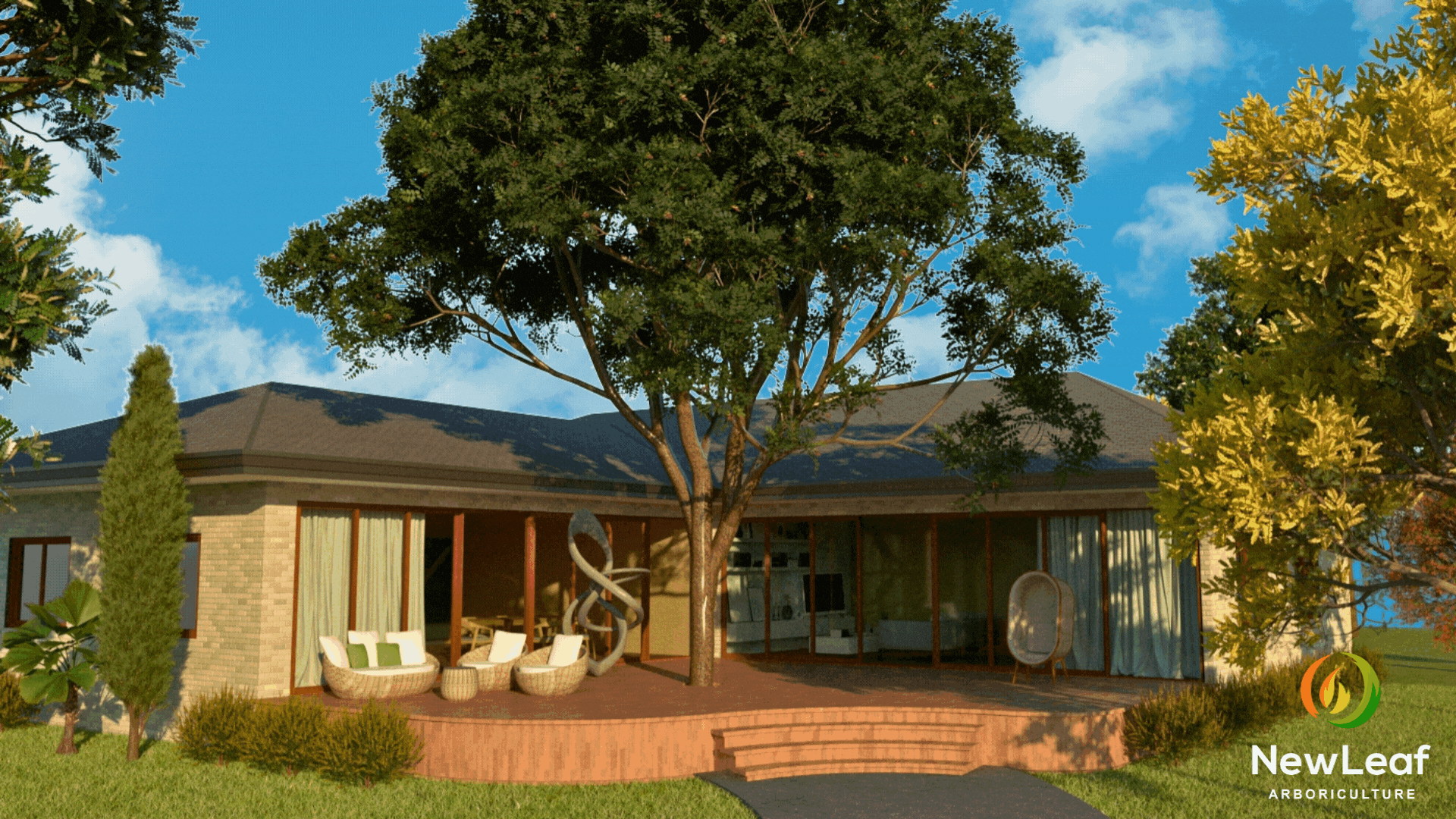This article and video is Part 3 of New Leaf Arboriculture’s series on Designing Around Trees, and it covers how close you can build to existing trees, considering the need for external underground services, changes to ground levels and other impacts from features outside the building footprint that might not be immediately obvious when looking at concept plans.
If you’re an architect, engineer or designer who wants to design around existing trees in a way that maintains their value and contribution to the property, what happens outside the building footprint is an essential consideration.
These external works might include:
- Underground services and trenches
- Over-excavation and battering during benching or bulk earthworks
- Ancillary structures including fences, pool equipment, sheds, paths and retaining walls
- Landscape works
- Overhead services
- Swimming pools
- Footpaths and roads
- Drainage swales
The importance of whole-picture thinking
Consider the repercussions of deciding to build a home or structure very close to an existing tree. Yes, it’s lovely to be close to trees so you can enjoy shade and the sounds of birds outside your window. Some architects even come up with intricate designs with structures wrapped around the tree trunk. However, the new building will need a footing, which will mean cutting through the root system of surrounding trees. This in itself can have a major effect on the tree and cause it to deteriorate.
Let’s not forget that there are features beyond the building itself as well. For example, in a standard residential build, there may be plumbing that needs trenching, which will come even closer to the trees than the house footprint. Then there might be paving outside the doors, which will be an added impact on the root system either from scraping, filling or compaction. If a swimming pool is proposed, this may affect even more tree roots.

As you can see, thinking only about the building footprint won’t cover the full extent of impacts on the tree. You need to understand how the whole property and ancillary elements will be laid out when you’re examining how close a building should be to a tree and how your designs will impact existing trees.
We have previously explained that cutting roots can have a major impact on the structural stability of the tree and its ability to take up water and nutrients. Cutting a few roots for your services and a few roots for the swimming pool might not seem like a big impact but when you consider that you are creating cumulative effects, you can be left with an unhealthy, and potentially unstable tree – which may take years to decline, and become a cost later down the track. This can potentially put the occupants at risk as well as having an impact on the environment and amenity of the property.
When you’re designing a building, it is so important to consider the entire land area that will be changed, not just the main building structure. It is also essential that you are clear on how construction work can damage trees, even if the plan is to keep the trees unharmed.
Engage the help of an arboriculturist early and request an arborist report to ensure that the essential works surrounding your structural designs don’t unnecessarily damage trees.
